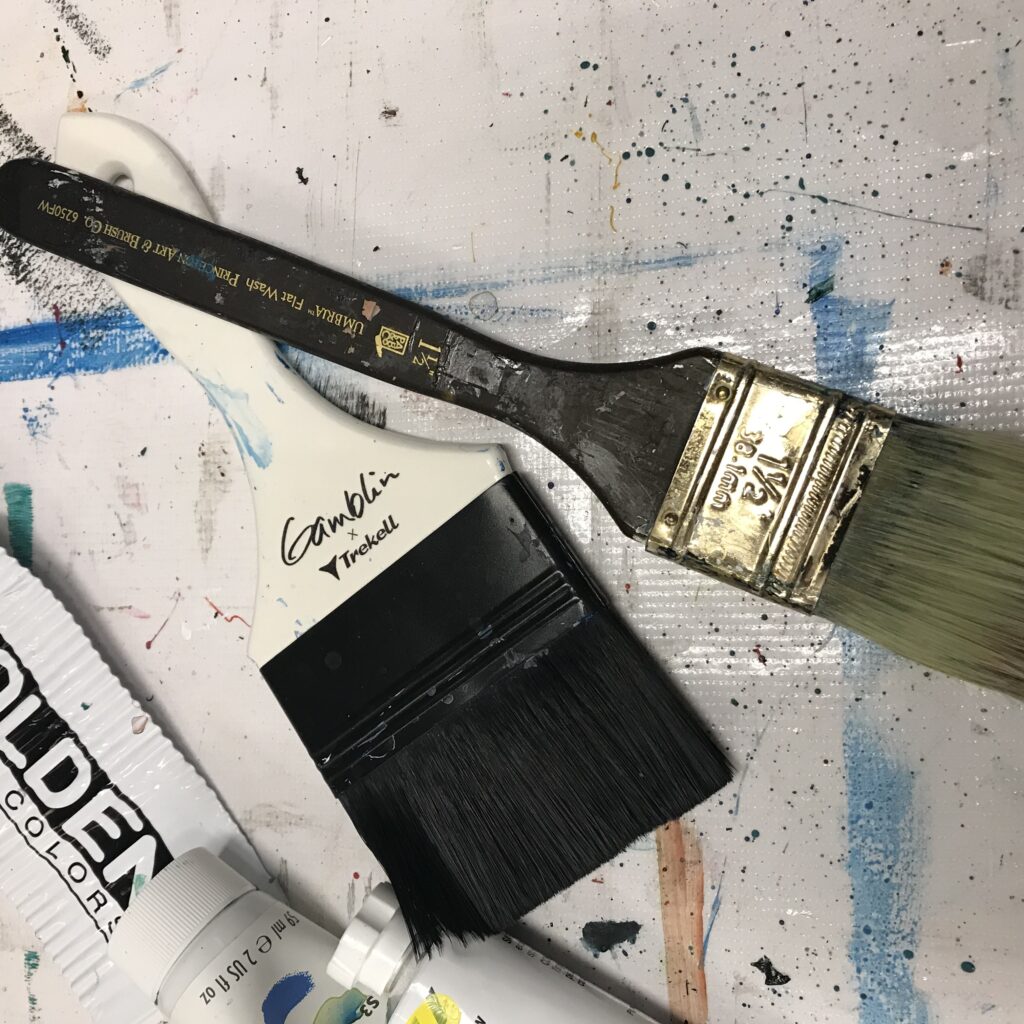I learned somewhere that the invention of the ferrule, the metal part of the paintbrush that holds the hairs on the handle, was one of the most significant developments in painting technique. The ferrule and the crimp allowed flat brushes to exist, which allowed artists to apply paint to large areas with a single stroke. Previously, brushes were only made in the round style, with thinner or thicker sections of hair. (Think about the work done by Abstraction Expressionists, for example, or what it would be like to paint your walls with a round brush.) Another impact of the ferrule is that it protects the connection between the hairs or bristles and the handle from rotting.
Flat brushes

These two flat brushes are some of my favorites. The Gamblin varnish brush on the left is a wonderful tool. I initially used it for finishing paintings only, but I began to use it to apply paint. It’s a lovely, soft edged synthetic brush. I’ll have to buy another to dedicate to varnishing, but it’s worth it. The Princeton flat brush on the right has flat, light handle and wonderfully substantial, but soft bristles. I feel an exciting sense of possibility when I pick up these tools.
I credit two painting instructors for helping me find a path in painting. The first, because she showed me how to paint large, with long handled brushes. The other, because she wrote a hilarious and pointed lesson on brushes and how to care for them. She introduced me to the Princeton Catalyst series of synthetic brushes for acrylics, which I use with great enthusiasm daily. Thanks, Ruthie V!
